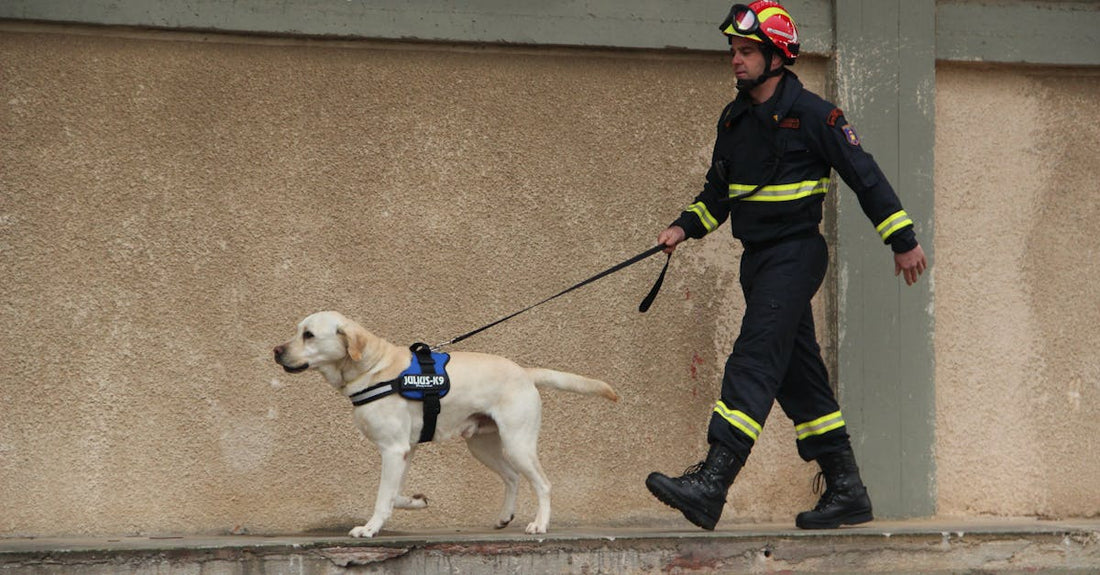
Pet Disaster Prep: Your Essential Guide
Share
Pet Disaster Preparedness Action Plan
Pets are family. Proactive planning keeps your entire household safe and together—because if it’s not safe for you, it’s not safe for them.
Pet Disaster Preparedness Action Plan PDF Printable
📥 No time to read? Download this essential PDF to keep your pet's emergency plan always within reach and gain peace of mind knowing they're prepared.
- Comprehensive emergency planning checklists
- Detailed go-kit packing lists & vital document organizers
- Guidance for managing pet behavior during & after a crisis

Pillar 1: Craft Your Emergency Plan
Build a “buddy system” with neighbors, friends, or family who can care for or evacuate your pets if you’re unable to do so. Make sure everyone knows your plan, where your go-kit is, and who holds spare keys.
- Evacuation Buddy: Name & phone of someone who will help.
- Long-Term Caregiver: Someone you’ve designated.
- Pet-Friendly Safe Havens: Research hotels, kennels, and friends outside the disaster zone.
- Practice & Training: Crate-train your pet, take calm car rides together.
- Escape Strategy: Map multiple routes, have “Rescue Alert” stickers, evacuate early.
Pillar 2: Assemble Go-Kit & Vital Documents
Pet Go-Kit Packing List
- 7‑day supply of food (waterproof container)
- 7‑day supply of water
- 2‑week supply of prescription meds
- Carrier with ID, extra leash/harness/collar
- Collapsible bowls, can opener, treats
- Pet first-aid kit
- Sanitation supplies (litter, poop bags, disinfectant)
- Comfort items: blanket, toys, calming aids
Vital Documents Checklist
Store physical copies in a waterproof bag and digital versions in the cloud. Review annually.
- Ownership papers, medical/vaccination records
- Microchip info, recent photo with you
- Medication and diet instructions
- Emergency contact sheet
Pillar 3: Managing Pet Behavior During & After a Crisis
During an Emergency
If sheltering in place, bring pets indoors to a windowless room, block hiding spots, and keep go-kit nearby. During evacuation, pets should be leashed or in carriers—never tied up. Monitor stress and heat exhaustion.
The Muzzle Question
Even calm pets may snap when frightened. Use a basket-style muzzle that allows panting and drinking—train in low-stress times. Never muzzle a vomiting pet.
Post-Disaster Recovery
- Keep pets leashed or contained outside.
- Check surroundings for hazards (broken glass, wires).
- Prevent drinking from standing water.
- Inspect for injuries; avoid wildlife and other animals.
- Be patient—maintain routines and update vaccines.
Pillar 4 & 5: Special Considerations & Resources
Large Animals
- ID all animals, plan trailer evacuation well in advance.
- Pre-arrange destinations and transport plans.
Small Caged Pets (Birds, Rodents, Fish)
- Transport in secure, ventilated cages or carriers with bedding.
- Use frozen water bottles wrapped in towels for cooling.
Key Resources
- Ready.gov’s Pet Preparedness Guide—core government resource on kits, travel tips, and large animal planning.
- American Red Cross: Pet Disaster Preparedness—includes tips on rescue alerts, muzzling, behavior, and recovery.
- ASPCA—offers local advice and disaster guides.
- Ready.gov Pet Preparedness Toolkit—downloadable flyers, checklists, and videos.
- FEMA app—for alerts and shelter information, including pet-friendly options.
And don’t forget to check your local Animal Control and Emergency Management offices for region-specific shelters and policies.
Note: This is an informational blog post and not a substitute for official emergency guidance.
Handle with template:
Is handle locked:
URL: /blogs/pet-care/pet-disaster-prep-your-essential-guide
Page type: article
Handle with template: article/pet-disaster-prep-your-essential-guide
Is handle locked:
